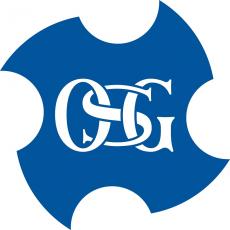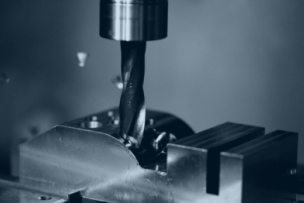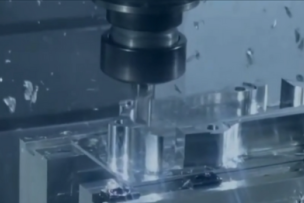Application 2. Connecting Rod (Figure 4)
Manufacturer Challenge: To minimize tool exchange frequency and to eliminate reamer processing time
Solution: The adoption of a custom drill with low thrust geometry to reduce stress on workpiece, maintain high hole precision and eliminate the need of a reaming tool
Reamers are generally used for finishing. With the adoption of a combo tool, a single tool was able to complete two different processes yet maintain the required hole accuracy. The result was a greatly simplified tool management and reduced cycle time.
Note: *Drilling products introduced in applications 1 and 2 are customized tooling based on standard OSG catalog items.
Productivity Improvement in Tapping
In addition to custom drilling solutions, this case study will also examine a threading application featuring OSG's XPF form tap series, which is engineered to generate up to 50 percent less torque versus other forming taps in the market, making it feasible for longer life at faster speeds in materials up to 35 HRC.
Application 3. Ring Gear (SCM material)
Manufacturer Challenge: Unstable chip evacuation
Solution: The adoption of the XPF forming tap
Result: The conventional spiral cut tap had a tool life of 300 holes. The XPF, on the other hand, was able to complete 2,000 holes stable. As forming tap forms screw threads through plastic deformation of work material, no cutting chips are created. With no cutting chips, chip evacuation troubles can be completely avoided.
In this application, although the processing only required a short tapping length, the work material was difficult to machine. Its properties have a tendency to generate inconsistent cutting chips, which would result in tool damage and breakage. When the manufacturer shifted focus on creating better chip separation by reducing the speed rate, gouging of the threads occurred. The slowing of tapping speed generates less heat. However, it would also cause greater cutting resistance and tool wear.
The XPF has significantly reduced friction resistance by adopting a special threading design and surface treatment. This results in a reduction in torque versus traditional products and a considerable suppression of heat generation.
Note: **Machining tips regarding the use of thread forming tap
Because plasticity varies depending on work materials, proper adjustment may be needed based on hardness and required accuracy of thread.
Standard & Custom Tooling Solutions
The automotive industry has been evolving rapidly in recent years through the new discovery of materials and technologies, prompting the need of sophisticated cutting tools capable of accommodating these new requirements. OSG is continuing to evolve and responding to changing needs through new innovations. OSG not only supplies powerful standard cutting tools for the automotive industry, but also provides tailored application solutions to help give manufacturers an extra boost to their production floor.












Talk to Us!
Leave a reply
Your email address will not be published. Required fields are marked *